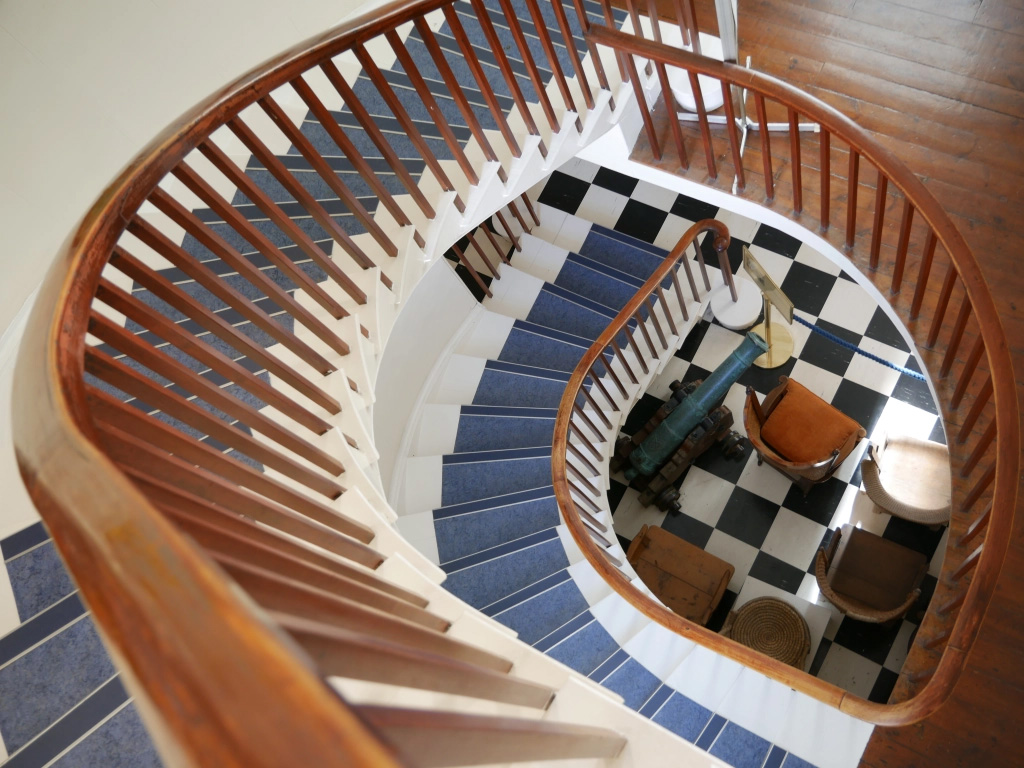The Tankerness House Story
Tankerness House didn’t start as a building with a courtyard and arched gate, that would come later. Originally it was two separate buildings that served St Magnus Cathedral and dating to the 1530s.
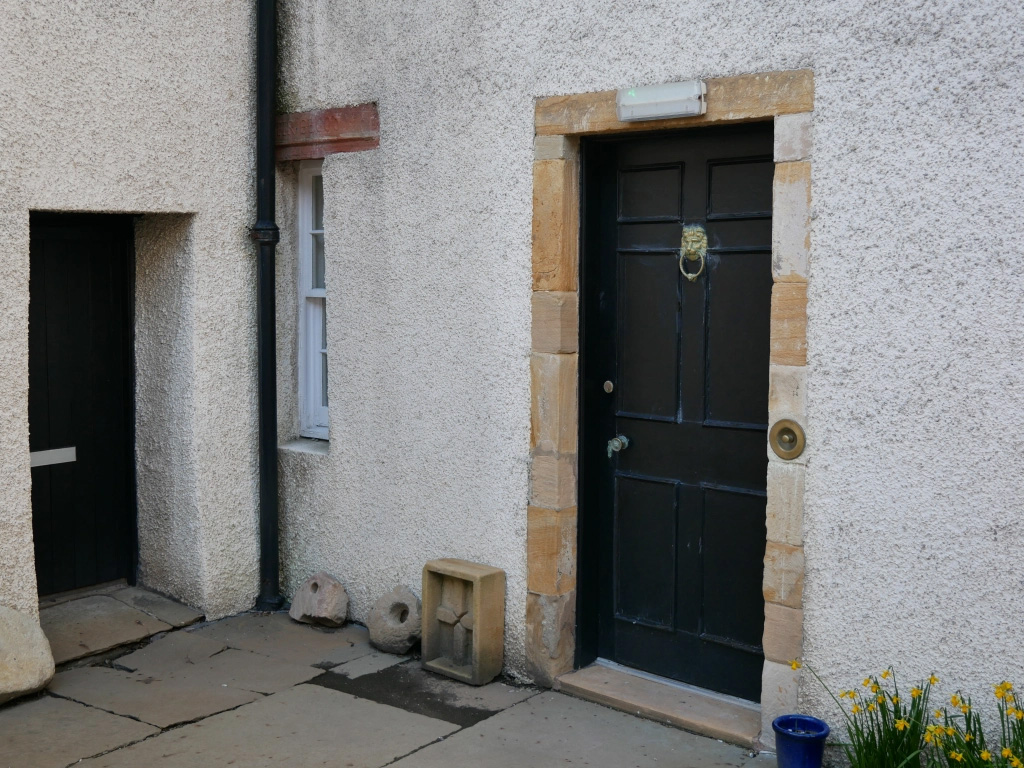
The north wing (on the right as you walk into the courtyard) was the official residence of the subchanter; the man who led the singing and was in charge of the cathedral choir. The south wing (on the left) was the residence of the archdeacon, who was a senior member of the clergy who administered the cathedral. Only the bishop was superior to the archdeacon.
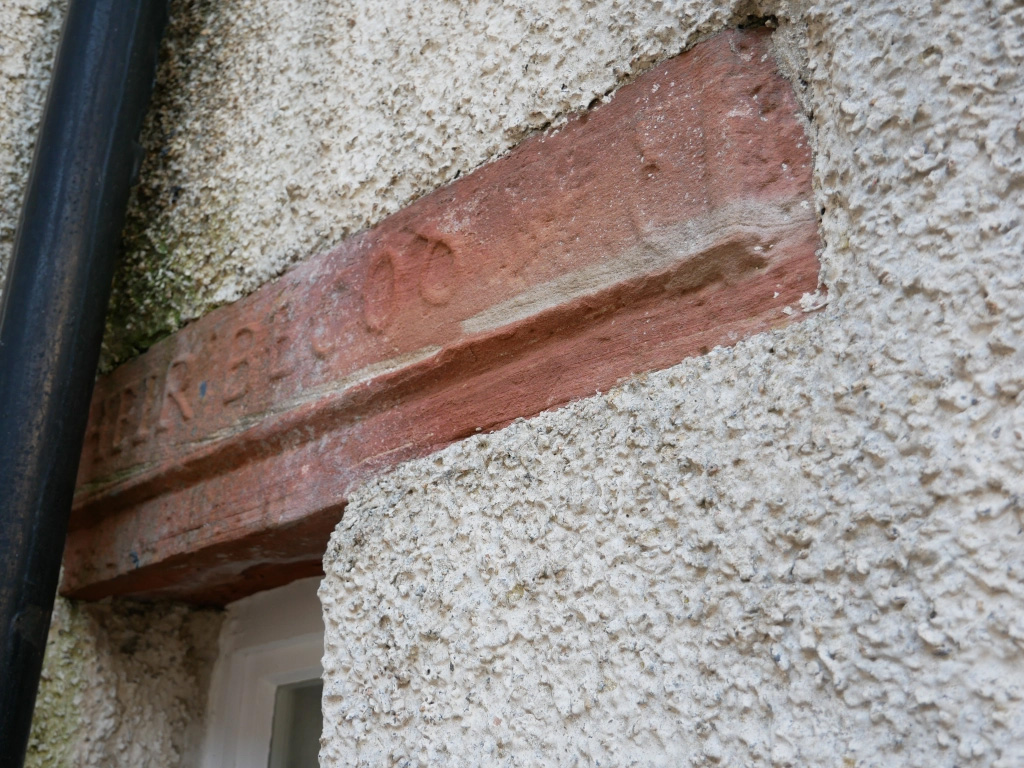
The Scottish Reformation in 1560 saw the cathedral and its clergy break with the Roman Catholic Church. The archdeacon, Gilbert Foulzie, along with Bishop Adam Bothwell, changed sides and became Protestant. Foulzie saw his chance and bought his residence from the church, along with the subchanter’s house, opposite his own.
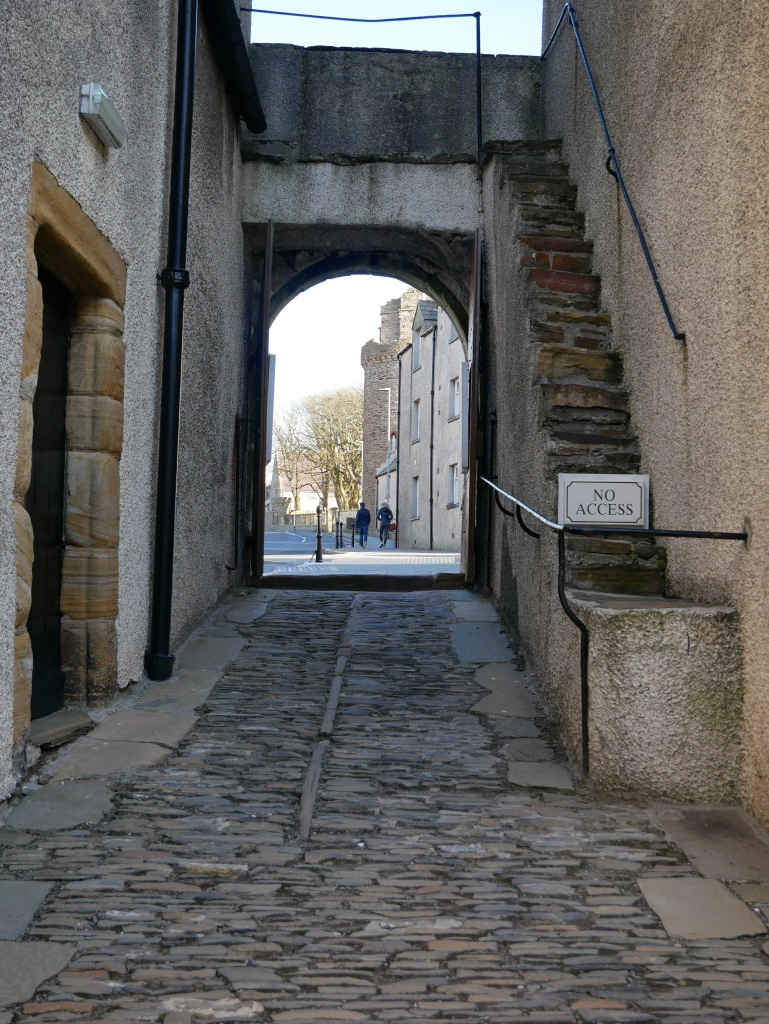
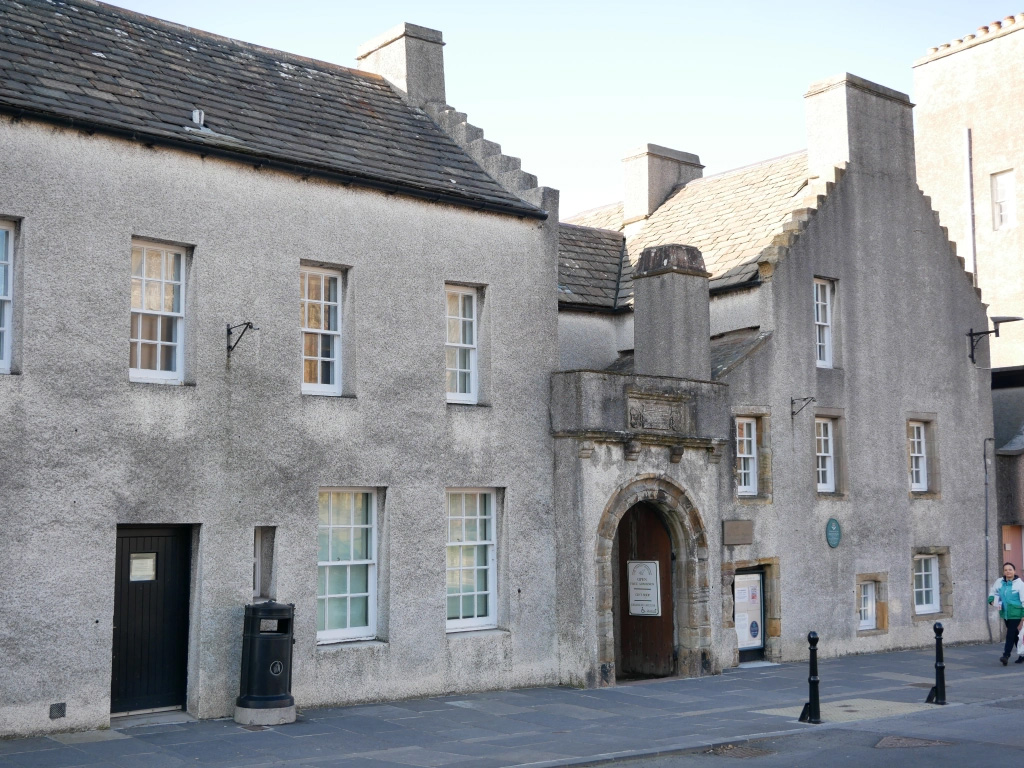
Foulzie built another wing to the east, at the front of the building, facing the cathedral. He had erected a fine archway leading into his new home, with a carved stone bearing the initials of himself and his wife; MGF for Master Gilbert Foulzie and EK for Elizabeth Kinnaird. Their armorial shields are also carved and the inscription, ‘Patrie Et Posteris, Nisi Dominus Custodierit Frustra, Semen Nostrum Serviet Ipsi, Anno Salutis 1574.’
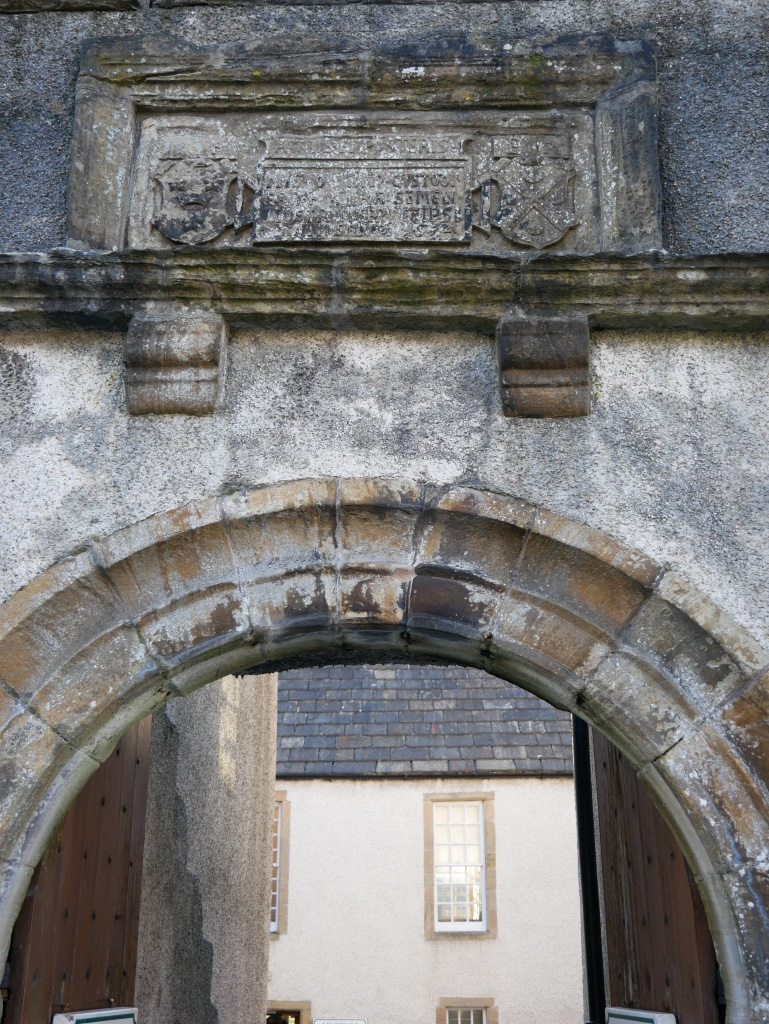
I am indebted to Ben Whitworth for the following translation of the Latin inscription.
The inscription ought to be read as four separate texts:
PATRIE ET POSTERIS
This is quite a common inscription on Scottish buildings, and it means “for the country and for posterity”. I think it’s inspired by a passage in Cicero, and I suppose it’s meant to show that the building work was done for public benefit not purely for selfish reasons. The first word is patria, country, rather than pater, father, so I think the [older translations] reference to Bishop Bothwell is a red herring.
NISI DOMINUS CUSTODIERIT FRUSTRA
From Psalm 126, abbreviated. The full verse is “Nisi Dominus custodierit civitatem, frustra vigilat qui custodit eam” – Unless the Lord guards the city, the watchman stays awake in vain. The sculptor assumes we know the verse well enough to supply the missing words!
SEMEN NOSTRUM SERVIET IPSI
From Psalm 21. Our (altered from meum, my, in the Psalm) seed (i.e. descendants) shall serve him.
ANNO SALUTIS 1574
In the year of salvation 1574.
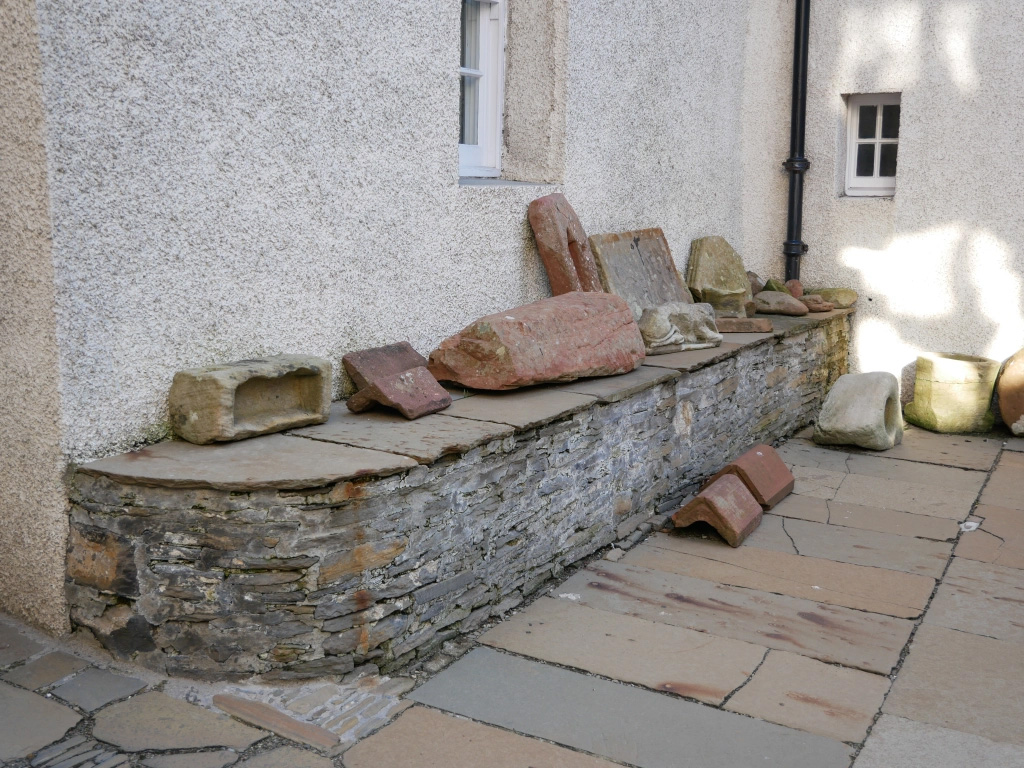
Inside the courtyard, now on three sides, Foulzie built a stone bench, called ‘The Dole Seat’. This is where the beggars of Kirkwall would receive alms (dole) from Foulzie. He did not do this purely out of concern for the poor, but as an act of charity which would stand him in good stead in the afterlife. His chances of getting into Heaven were greatly increased by good deeds.
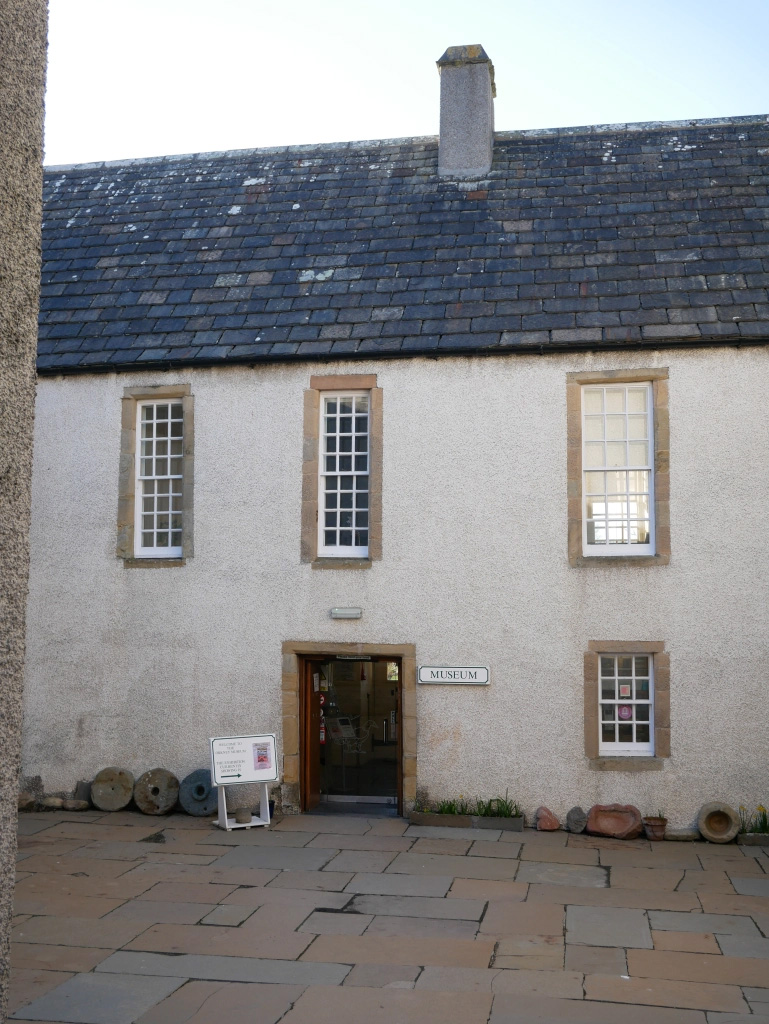
The house stayed with Foulzie’s descendants until 1642 when it was bought by James Baikie of Tankerness. The west wing (in front of you as you enter the gate) was built c1680 to enclose the courtyard completely. The Baikies of Tankerness gave their town house the name Tankerness House, as it is still called. More work was carried out on the building during the 18th and 19th centuries.
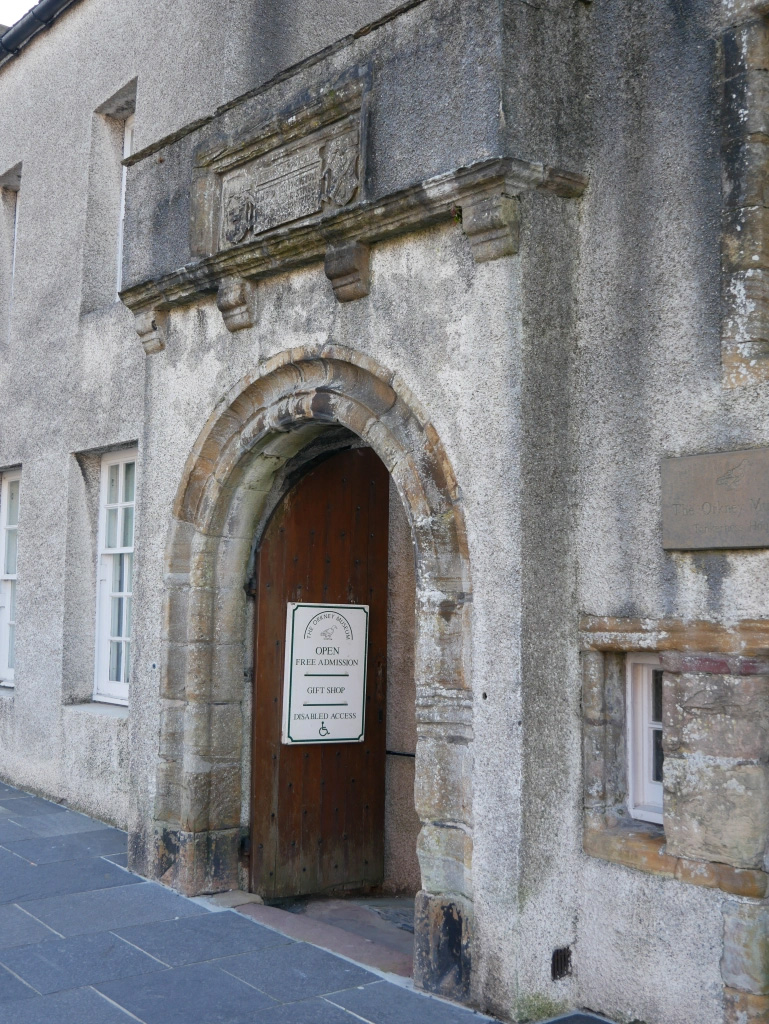
In 1951 Tankerness House was sold to the Kirkwall Burgh Council by Robert Baikie. I was split up into flats and rented out. As the state of the building grew worse, calls were made to have it demolished and to replace it and its gardens with a car park for the cathedral. This drastic move was opposed by (among others) librarian Evan MacGillivary, painter Dr Stanley Cursiter and Provost James Flett, who wished to preserve the building. But what could it be used for? It was decided that a museum was needed; one which told the story of Orkney from ancient times. It opened to the public as Tankerness House Museum on 31st May 1968. Now archaeological finds in Orkney usually stays in the islands. The slightly confusing name was changed to the Orkney Museum in 1999, to make it clear that it is the main museum for the interpretation of Orkney’s prehistory and history and not just an historic building.
